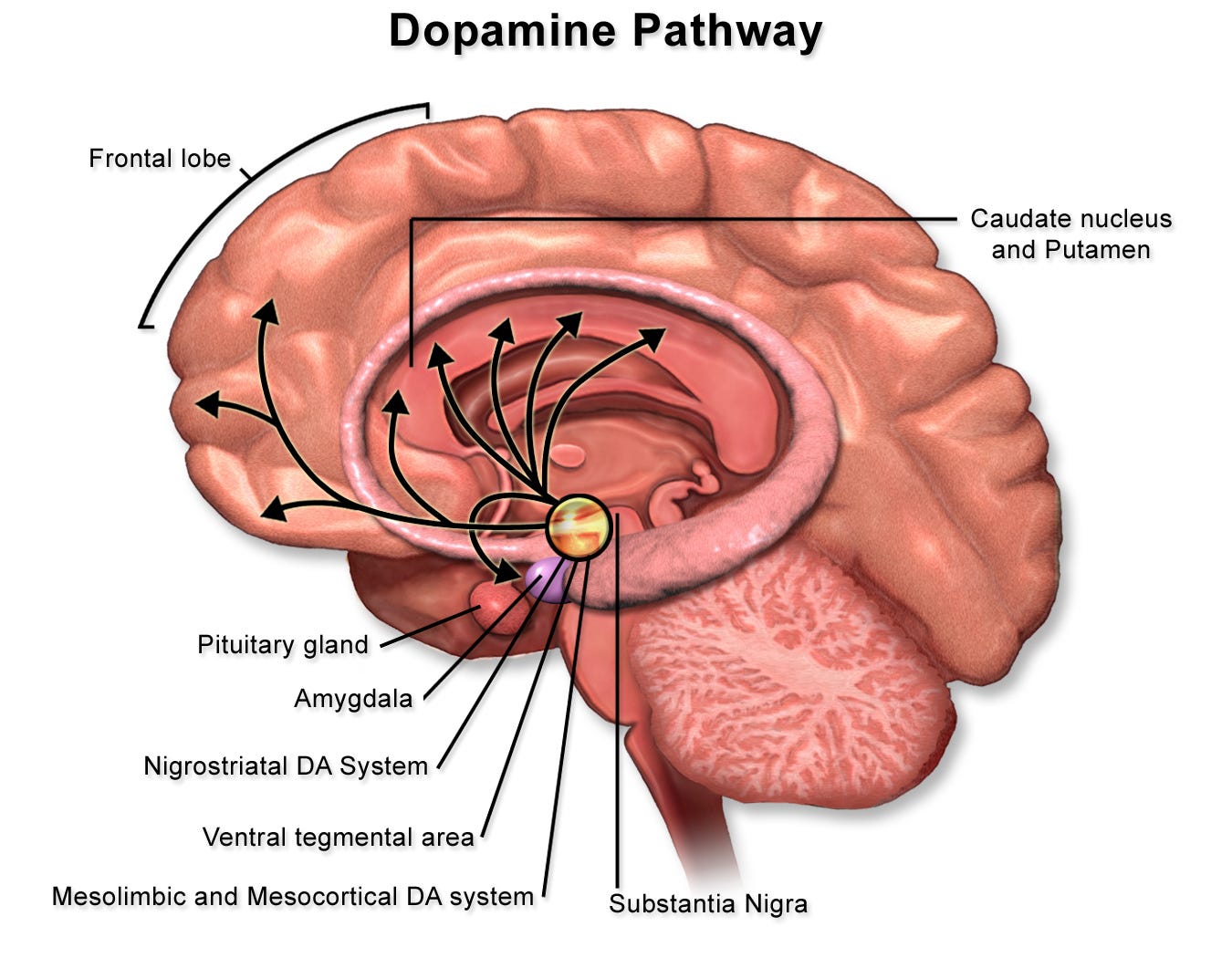Scroll Control: Are Social Networks Rewiring Our Brain?
There's a reason why apps like Insta and TikTok are so addictive, and it's a slightly scary truth...
It’s becoming more and more understood that the reason apps like TikTok are so popular is because they have been specifically designed to hijack the brain and make sure they do everything they can to keep us scrolling. We’ve probably all been guilty of lightheartedly joking about how we’re ‘addicted’ to social media, but if we break down the neuroscience, addiction is in frightening reality, the exact right word.
What is addiction?
According to the ‘National Institute of Drug Abuse’:
Addiction is defined as a chronic, relapsing disorder characterized by compulsive [drug] seeking and use despite adverse consequences. It is considered a brain disorder because it involves functional changes to brain circuits involved in reward, stress, and self-control.
The reason I’ve put the word ‘drug’ in brackets there is because the purpose of this post is to highlight that it can be easily replaced by the words ‘social media’. This is because the neuroscience of addiction is something that the infamous algorithms behind the most popular socials have been able to harness and expose to make them as popular as they are.
There are specific pathways in our brain which are responsible for us feeling a sense of reward and enjoyment when we do something that we find pleasurable. I’ll let you fill in the dots with your vice. But one of the key parts of this pathway is a molecule you’ve probably heard about before, called Dopamine. It’s a molecule that is essential not just for being produced when we do things we like, but is involved with the regulation/performance of numerous other processes throughout our body including movement, memory attention and sleep to name a few.
What happens when someone becomes addicted to something is that the areas of the brain in that diagram above, become activated in particular ways and there is a surge in dopamine. This leads to a ‘rewiring’ of these pathways and causes the individual to have an uncontrollable urge to keep doing whatever activity that activated the pathway in the first place. At the most basic level, the action becomes unconsciously associated with a feeling of pleasure, which leads to a repetitive drive to maintain that feeling. This drive is often so strong that it will completely disregard anything in its way regardless of what the consequences might be.
The key point I’m trying to get across here is that addiction is a disease that fundamentally changes how your brain behaves. It is not something that can be controlled or easily overcome once it’s properly established. And the frightening reality is that social media has specifically positioned itself to exploit this aspect of our brains behaviour for the sole purpose of keeping us engaged.
Scroll Control
The whole idea of this post came around after I read a study published in 2021 which talked about how when we view content specifically curated for us (by the infamous algorithms), our brains are more active in the reward areas (see previous diagram) than when we are looking at content not especially curated for us. And we hear a lot about the power of social media algorithms and how they control the content we’re shown, tailor-making everything we see for us; our interests, recent searches or even things they’ve overheard us talking about. Whenever this happens to me I always think about this scene where the FBI is eavesdropping on the public from the Simpsons Movie and it makes me laugh to imagine this is real life now - I’m really hoping someone else can also relate to this.
So linking back to the previous section, what this tells us, is that social media is actively exploiting our neuroscience and using that to help ensure they get the most valuable thing to any business: your attention.
In short: you see content you enjoy, your addiction-related brain areas are activated, your dopamine surges and your brain reinforces the association between content and feeling good so you keep scrolling, looking for the next trigger.
Now read that back and replace the words ‘content’ and ‘scrolling’ with ‘drugs’ and ‘using’, ‘cigarettes’ and ‘smoking’ or ‘food’ and ‘eating’….
To be clear, I’m not trying to be judgy here, in fact, I’m trying to do the complete opposite. I’ll be the first to admit that my screen time is way higher than I would like it to be, and the point I’m trying to get across with all of this is that to a certain extent, we literally can’t help it. These apps are being designed specifically to exploit and hijack our brains just to keep us using them. And weirdly, I think it’s really interesting the way these companies have used neuroscience to help them understand how to drive engagement.
But I think it’s important that we don’t just use the fact that we can’t help being addicted to socials as a reason not to make a change. And if cutting down your usage of apps like TikTok or Instagram is something you want to do then I think it’s important to properly understand what they’re doing to you first. Hopefully, this might have helped shed some light on the true extent of it.
See you in the next one,
Joe


